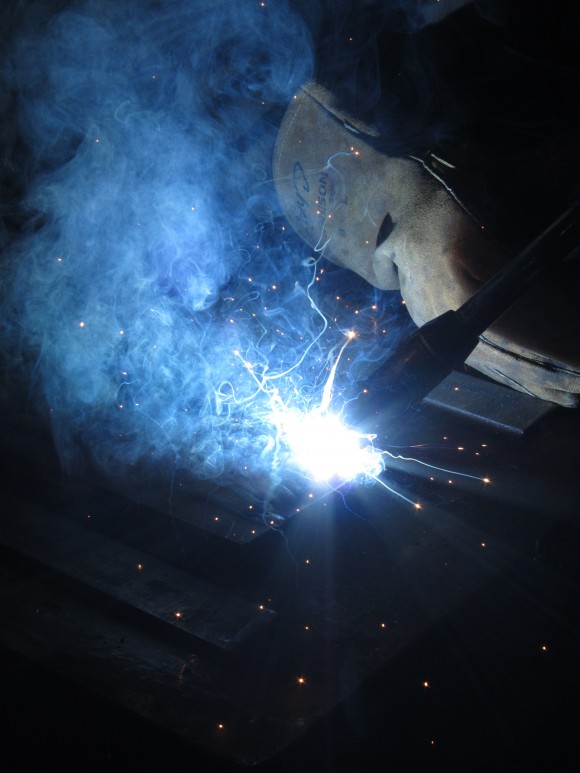
Today’s market has many gas shielded flux cored arc welding (FCAW) wires. The task of selecting the right wire for a particular application can be intimidating and confusing. The majority of FCAW wires that are common to the heavy fabrication steel industry are categorized into just two types: rutile flux wires and basic flux wires. Understanding the main differences between these two wire flux types can serve as a good starting point and guide through the wire selection process.
Rutile Flux
Rutile flux wires are more “welder friendly” than basic flux wires. For a given wire diameter, rutile flux wires have a wide range of welding current over which a smooth arc and good operational stability are maintained. This wide current range not only broadens the process window for acceptable welds but makes achieving those welds more attainable over a range of welder skill levels.
Rutile flux wires have excellent out-of-position welding capability. Generally, rutile flux wires have a lower risk of forming incomplete fusion defects and produce good bead shape for out-of-position welds. Rutile flux wires also produce less fume than basic flux wires.
Basic Flux
Basic flux wires are used primarily when the goal is to achieve excellent weld metal mechanical properties. Basic flux wires produce welds with good low-temperature impact toughness, even down to extreme temperatures like -100°C. The diffusible hydrogen level of the weld deposit is less than 5mL/100g of deposit. Therefore, basic flux wire is often used on high strength steels where hydrogen cracking is a concern.
The composition of the basic flux wire that enables a weld to achieve these good mechanical properties and low hydrogen diffusion levels comes at the cost of lowered operational stability and the limitation with out-of-position welding. The solidifying slag of the basic flux wires provides less support for the weld pool making basic flux wires less operable in out-of-position welding. Basic flux wires are also known to have a more erratic arc.
Guiding Principle
Begin your electrode search within the rutile flux based wires if your applications:
• are fabricated with a semi-automatic FCAW where “welder friendliness” is a concern
• involve a large percentage of out-of-position welds
Conversely, start your electrode search within the basic flux based wires if your applications:
• require excellent low-temperature impact toughness
• require a low diffusible hydrogen level
This rule of thumb can serve as a good starting point for determining an appropriate FCAW wire for your specific application.
